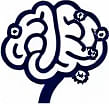Innovation Diffusion as a Mental Model
 by Marlene Keeling
by Marlene Keeling
Innovation diffusion offers a framework for how ideas and technologies spread. By examining adopter categories, individuals can apply this model to foster change in business and daily life, enhancing cognitive tools for better decision-making. This approach supports growth in various fields.

Innovation diffusion serves as a vital mental model that outlines the process by which new ideas gain traction. This model, first introduced by a sociologist, provides a structured way to view the spread of innovations.
The Basics of Innovation Diffusion
At its core, innovation diffusion involves the movement of novel concepts from their origin to wider adoption. It breaks down the journey into distinct phases, starting with initial introduction and ending with full integration. One key aspect includes the categories of adopters who embrace changes at different speeds.
These categories help in predicting how quickly an idea might take hold. For instance, early participants often drive the initial momentum, while later groups follow as acceptance grows. This progression can be observed in various settings, from technology rollouts to social movements.
Adopter Categories in Action
The model categorizes people based on their readiness to adopt new things. Adopter categories include those who are quick to try innovations and others who wait for proven results. Each group plays a role in the overall diffusion process.
In business, recognizing these categories allows leaders to target strategies effectively. For example, focusing on early enthusiasts can create buzz that influences the majority. This targeted approach ensures that resources are used wisely during implementation.
From a psychological perspective, adopter categories reveal how individual traits affect behavior. People with certain personality traits may leap into new experiences, while those with different preferences observe from afar. This insight aids in personal development by highlighting potential barriers to change.
Applications in Business and Psychology
In business contexts, innovation diffusion guides product launches and market entry. Companies use this model to analyze consumer behavior and refine their offerings. By studying past successes, organizations can adapt strategies to current needs.
For psychology, this mental model explores how ideas shape thought patterns. It shows the influence of social factors on decision-making processes. Professionals in cognitive development can draw from this to promote healthier habits or learning methods.
Real-world examples abound, such as the rapid spread of mobile technology. Early models gained footing through pioneering users, leading to widespread use over time. Such cases demonstrate the practical value of this framework.
Practical Steps for Using This Model
To apply innovation diffusion personally, start by identifying potential innovations in your environment. Assess which category you fall into and consider how to move forward. Building awareness of these dynamics can improve problem-solving skills.
In teams, encourage discussions about new ideas and their potential reach. This fosters an environment where creativity thrives. Tracking progress through simple metrics can provide clear feedback on adoption rates.
For lifelong learners, integrating this model means experimenting with new knowledge regularly. Reflect on past adoptions to refine future approaches, enhancing overall cognitive flexibility.
Benefits for Cognitive Development
Engaging with innovation diffusion strengthens mental frameworks by promoting adaptability. It encourages viewing challenges as opportunities for growth. This mindset shift can lead to more effective strategies in both professional and personal spheres.
By internalizing this model, individuals build resilience against stagnation. It supports ongoing learning by illustrating the value of incremental change. Over time, this practice contributes to sharper decision-making abilities.
In summary, innovation diffusion stands out as a practical tool for navigating life's changes. Its principles offer clear pathways for adoption and growth, making it essential for anyone seeking to enhance their cognitive toolkit.
